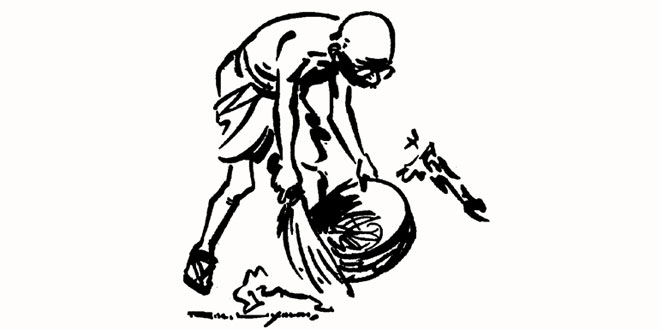Question: Re-read the story on Rathnam as well as the provisions of the 1989 Scheduled Castes and Scheduled Tribes (Prevention of Atrocities) Act. Now list one reason why you think he used this law to file a complaint.
Answer: The 1989 Scheduled Castes and Scheduled Tribes (Prevention of Atrocities) Act was formed in response to the demands made by Dalits and others that the Government take seriously to protect them against the ill-treatment and humiliation faced by Dalits and tribal groups in their everyday life. Rathnam’s hut was burnt and he was forced to leave the village along with his mother and other members of his family as they continued to be ostracized by the powerful castes in the village. So Rathnam used the above law to file a complaint to protest against the domination and violence of the powerful castes in his village.
Question: Why do Adivasi activists, including C.K. Janu, believe that Adivasis can also use this 1989 Act to fight against dispossession? Is there anything specific in the provisions of the Act that allows her to believe this?
Answer: The Adivasi activists including C.K. Janu believe that Adivasis can also use this 1989 Act to fight against dispossession because this Act guarantees the tribals not to be dispossessed from the land resources forcibly. They pointed specifically that this Act merely confirms what has already been promised to the tribal people in the Constitution – that their land can not be sold to or bought by non-tribal people. In cases where this has happened, the constitution also guarantees that the right of the tribal people to repossess their land.
Question: What do you know about the social hierarchy prevalent during the Vadic times?
Answer: The root of untouchability can be traced the caste system prevalent in the Vedik times. The caste system was known as the varna system, which was based on colour and occupation. The society was then divided into four varnas, namely Brahmins, Kshatriyas, Vaishyas and Shudras.
Question: What is the fate of manual scavengers in India?
Answer: Manual scavenging refers to the manual removal of human excreta dry toilets. Manual scavengers are considered to be the most oppressed section in India. They are not allowed to enter temples or draw water from the tank used by the upper castes. These people are referred to by different names in different parts of India.
 Class Notes NCERT Solutions for CBSE Students
Class Notes NCERT Solutions for CBSE Students


